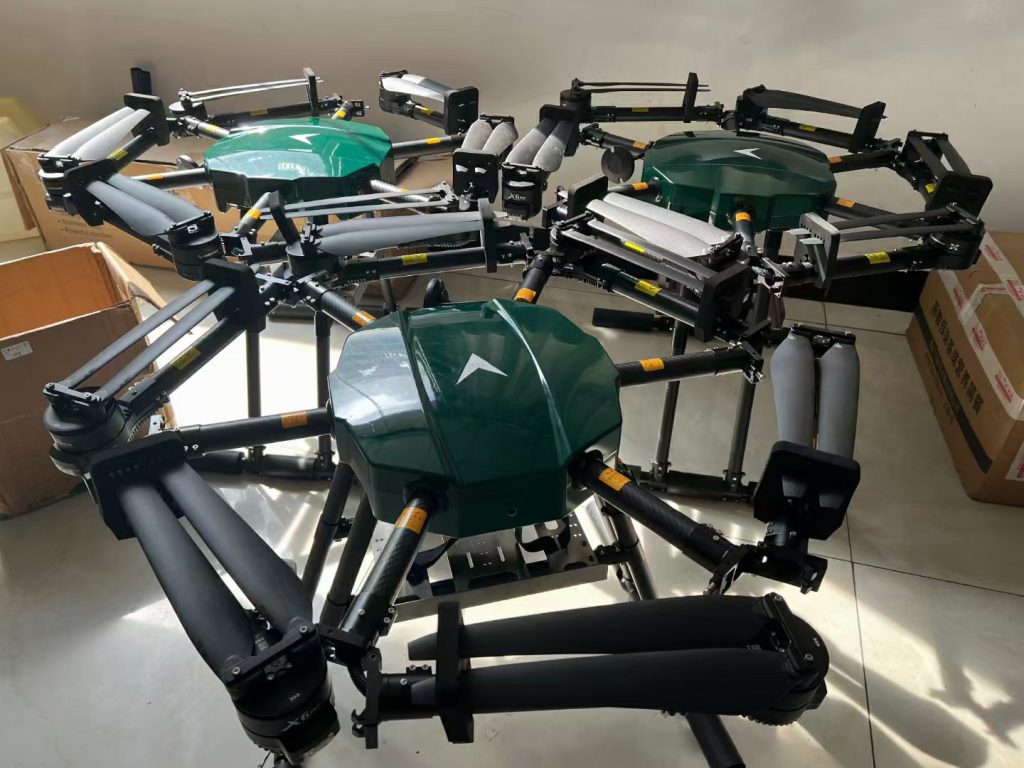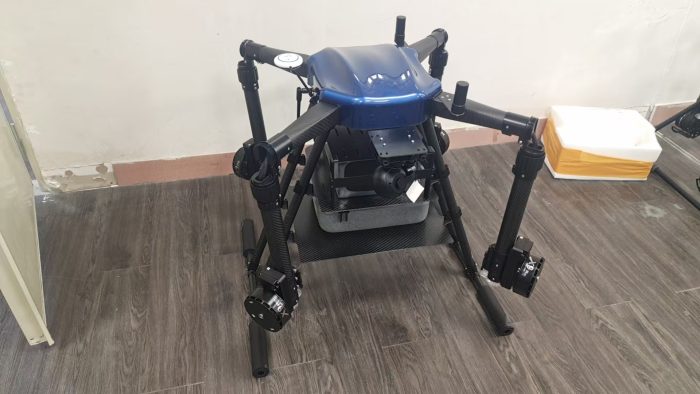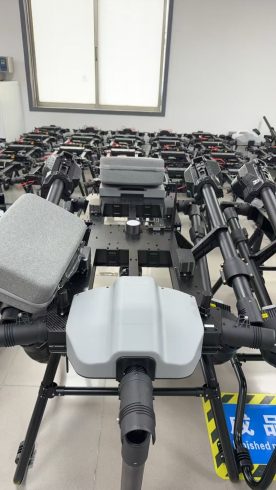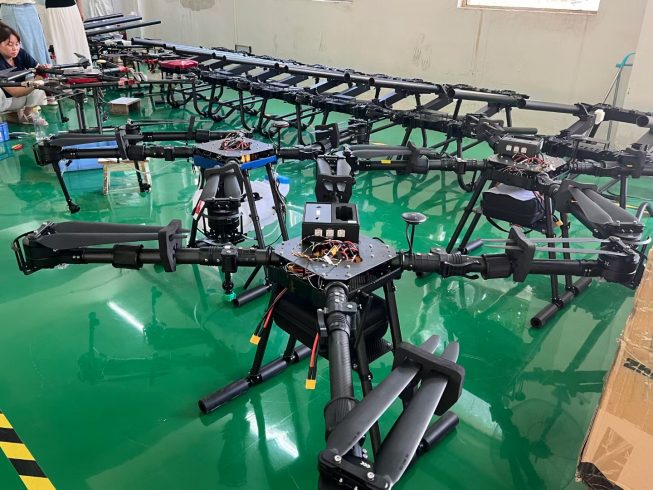In the face of a climate that’s shifting faster than generations past, farmers stand on the front lines—battling droughts that wither crops, floods that drown fields, and heatwaves that bake soil sterile. For too long, agriculture has reacted to climate chaos; now, it’s time to prepare for it. At our factory, we’re not just building drones—we’re forging wings of resilience, tools that help farmers adapt, endure, and even thrive in an unpredictable world. Here’s how we’re turning aerial technology into a shield for the future of food.
The Climate Crisis: Farming on Shifting Ground
Climate change isn’t a distant threat; it’s here, rewriting farming rules overnight:
-
Droughts Intensify: In the American Southwest, reservoir levels have dropped 50% since 2000, forcing farmers to ration water.
-
Rainfall Chaos: Monsoons in South Asia now bring deluges or dry spells—never the predictable downpours farmers relied on.
-
Heat Stress: Crop failures spike by 30% in regions where temperatures exceed 95°F (35°C) during pollination seasons.
Traditional coping methods—saving water in ponds, rotating crops—aren’t enough. Farmers need allies that move, adapt, and act fast.
Our Mission: Drones That Build Resilience
We design every drone to answer one question: “What does this farm need to survive the next storm, drought, or heatwave?” Here’s how we engineer resilience into every flight:
1. Preemptive Protection: Data That Warns Before Disaster Strikes
Resilience starts with foresight. Our drones carry multispectral and thermal sensors that detect stress weeks before it’s visible:
-
Drought Prediction: By measuring soil moisture and leaf water potential, drones flag fields at risk of dehydration. In Arizona, a alfalfa farmer now irrigates only 30% of his land—targeting zones our drones identify as “thirsty,” saving 500,000 gallons of water monthly.
-
Heat Mitigation: Thermal cameras spot crop canopy temperatures spiking above safe levels (86°F/30°C for corn). In Texas, a cotton grower uses this data to deploy shade cloths before heatwaves hit, cutting yield loss by 60%.
2. Rapid Response: Drones That Act When Humans Can’t
When disasters strike, speed saves lives—and crops. Our drones are built for urgency:
-
Flood Rescue: In Bangladesh, during monsoon floods, our drones map submerged fields, identify high-ground safe zones for livestock, and even drop emergency feed to stranded animals.
-
Fire Suppression: In California, vineyard owners use our drones to spray fire-retardant gel on dry brush, creating firebreaks before wildfires reach their land.
3. Adaptive Learning: Drones That Evolve With the Climate
Climate change isn’t static, so our drones aren’t either. Machine learning lets them “learn” a farm’s changing patterns:
-
Crop Rotation Suggestions: Over time, drones analyze which varieties thrive in new weather extremes, advising farmers to switch from wheat to millet in drought-prone areas.
-
Soil Health Tracking: By monitoring organic matter and erosion, drones predict which fields will lose fertility fastest—prompting cover cropping or reduced tillage.
Farmers as Resilience Champions: Real Stories, Real Impact
Meet the growers turning our drones into lifelines:
Luis, Coffee Farmer, Colombia
Colombia’s coffee-growing highlands now face unpredictable frosts. Luis’ farm, perched at 1,800 meters, once lost 20% of his crop to cold snaps. With our drones:
-
Frost Alerts: Drones detect temperature drops below freezing and trigger overhead sprinklers (which release heat as they freeze), protecting buds.
-
Yield Recovery: Post-frost, drones map damaged areas, letting Luis replant quickly instead of waiting for manual surveys. “Last year, I lost $8,000 to frost,” he says. “This year? Zero. The drone is my insurance policy.”
Aisha, Sorghum Grower, Niger
In Niger’s Sahel region, droughts have shrunk harvests by 40% in a decade. Aisha’s cooperative uses our drones to:
-
Micro-Catchment Mapping: Identify small depressions in fields where rainwater collects—critical for growing drought-resistant crops like millet.
-
Seedling Survival Tracking: After planting, drones monitor seedling health, ensuring farmers water only the most promising areas. “We now grow enough to feed our families and sell surplus,” Aisha grins. “The drone taught us to work with the land, not against it.”
Javier, Vineyard Owner, Chile
Chile’s wine country has suffered from erratic rainfall—too much in spring (causing rot), too little in summer (stunting grapes). Javier’s drones:
-
Adjust Irrigation: By measuring vine water stress, they tailor drip irrigation to each row—boosting grape quality without wasting water.
-
Prevent Mildew: Early detection of humidity spikes lets Javier spray fungicide before mold takes hold. “My wines now score higher,” he says. “And my carbon footprint? Lower. Win-win.”
Building a Resilient Ecosystem: Beyond Individual Farms
Our work ripples outward, strengthening entire communities:
-
Knowledge Networks: Farmers share drone data via a cloud platform, creating regional “climate resilience maps” that warn of upcoming droughts or floods.
-
Policy Advocacy: We partner with NGOs to push for government subsidies for climate-adaptive drones, making them accessible to smallholders.
-
Youth Engagement: In Kenya, we train teens to repair drones and analyze data—turning them into “resilience ambassadors” who teach elders how to use the tech.
The Horizon: Flying Toward a Hardier Future
Climate change won’t slow down, so neither will we. This year, we’re launching:
-
Climate-Proof Payloads: Drones equipped with sensors to monitor soil carbon (key for carbon credit programs) and air quality (tracking wildfire smoke impact).
-
Swarm Rescue Missions: Teams of drones working together to plant drought-resistant seeds across vast areas in record time.
-
Open-Source Resilience Guides: Free digital playbooks sharing farmer-tested strategies for using drones in floods, droughts, and heatwaves.
Farming has always been about resilience—about planting seeds when the sky looks gray, about mending fences after a storm, about hoping the next season brings rain. Our drones are just another tool in that age-old toolkit, but they’re a powerful one. They don’t just fly; they watch, warn, and work—helping farmers stand taller against the winds of change.
Because the future of food depends on farms that can bend but not break. And we’re building the wings to help them soar, even when the storm rolls in.
THE END










暂无评论内容